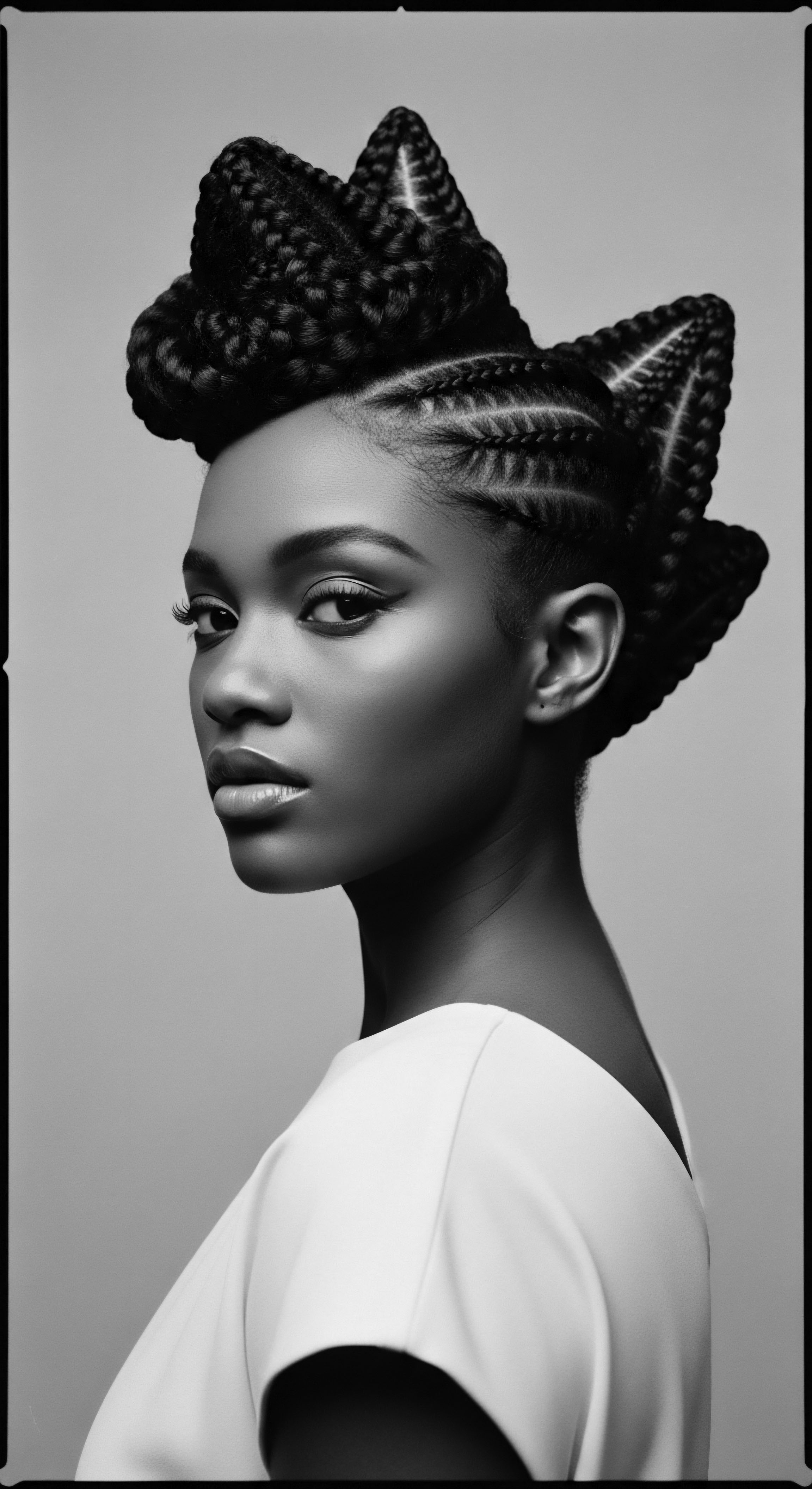
Roots
There exists a profound connection between the helix of a hair strand and the unbroken lineage of generations past. For those of us with textured hair, this connection is not merely metaphorical; it forms the very core of our being, a palpable link to a rich, often unwritten, history. To consider how CROWN Act provisions acknowledge ancestral styles means to walk a path through time, recognizing that what grows from our scalp is a vibrant archive of identity, a living testament to resilience, and a testament to heritage passed down through the ages. It is a story told not just in legal statutes, but in the very curl patterns, the intricate braids, and the conscious choice to adorn oneself in ways that echo the wisdom of forebears.

Anatomy of a Heritage Strand
The very structure of textured hair speaks volumes, quite literally. Unlike straighter strands, which exhibit a more circular cross-section, coily and kinky hair often displays an elliptical or flattened shape. This unique geometry, coupled with variations in cuticle arrangement and protein distribution, grants these hair types their characteristic strength, elasticity, and propensity for intricate coiling. From a scientific perspective, the biological blueprint for these varied forms has been sculpted by environmental adaptations over millennia, particularly across African and diasporic communities.
Our hair’s inherent curl, its ability to compress and expand, lends itself naturally to protective practices, styles that shield and preserve, practices that have been refined across countless generations. Understanding this fundamental biology helps one grasp why certain styles have always been central to Black and mixed-race aesthetic and practical life.
The distinctive characteristics of textured hair — its density, its curl pattern, its very fiber composition — are not random. They are the result of deep ancestral conditioning, honed through living in diverse climates and engaging with varying ecological landscapes. This is why traditional care practices, like using specific plant oils or styling methods, often align precisely with the needs of these unique hair structures. The CROWN Act, in its legislative text, indirectly acknowledges this biophysical reality.
When it forbids discrimination based on hair texture or protective hairstyles, it steps into a long-standing dialogue between our biological inheritance and societal expectations. It offers a shield for the very physical manifestation of our ancestry, allowing individuals to honor their natural growth without fear of reprisal.

Hair’s Deep Classification
For centuries, the categorizing of hair, especially textured hair, carried the weight of colonial gaze and pseudoscientific notions of race. Yet, within communities, there existed an internal, often unspoken, understanding of different hair types. These were not about hierarchy, but about kinship, shared experience, and practical care. Modern classification systems, like the Andre Walker Hair Typing System (though sometimes critiqued for its limitations), attempt to scientifically classify curl patterns from straight (Type 1) to tightly coily or kinky (Type 4).
This latter category, Types 3 and 4, represents the vast majority of Black and mixed-race hair. The distinct curl types within this range — 3A, 3B, 3C, 4A, 4B, 4C — reflect varying degrees of helix tightness and coil circumference. Each type presents its own considerations for hydration, manipulation, and styling. The CROWN Act does not explicitly cite these classifications, but its broad protection of “natural hair” and “protective hairstyles” covers the full range of these ancestrally rooted textures, irrespective of their specific numerical classification.
The CROWN Act stands as a contemporary affirmation of ancestral hair expressions, ensuring protection for styles that carry the essence of identity across generations.
Our hair, in its diverse forms, is a living codex, and the terms we use to describe it often carry historical weight. Think of words like Braids, Locs, Twists, or Cornrows. These terms are not just descriptors; they are echoes of ancient practices. Many traditional African societies had specific names for different styles, often linked to marital status, age, social standing, or regional affiliation.
These styles were more than cosmetic; they were forms of communication, maps of kinship, and symbols of spiritual connection. The legal definition of “protective hairstyles” within the CROWN Act embraces this lexicon of ancestral styling, providing a legal framework for practices that have sustained communities for centuries. It moves beyond a generic understanding of ‘hair’ to validate the specific, culturally significant forms our hair takes.

How do CROWN Act Provisions Acknowledge Ancestral Styles from a Historical Context?
The CROWN Act, an acronym for “Create a Respectful and Open World for Natural Hair,” directly addresses historical and ongoing discrimination against natural hair textures and protective styles. Its provisions recognize ancestral styles by explicitly including them within the scope of prohibited discrimination. Historically, Eurocentric beauty standards dominated public and professional spaces, rendering natural Black hair, particularly in its coily and kinky forms, as “unprofessional,” “unkept,” or “distracting.” This led to a systemic marginalization where individuals were often forced to alter their natural hair—through chemical relaxers or straightening—to conform, or face adverse consequences in education, employment, or housing. This enforced conformity erased outward expressions of heritage, pushing ancestral styles into the private sphere.
The Act’s legislative language, which prohibits discrimination based on “hair texture and protective hairstyles associated with race,” directly targets these historical biases. The inclusion of “protective hairstyles” is critical because these styles — such as Braids, Locs, Twists, Buns, and Knots — are not merely fashion choices. They are often direct continuations of ancestral practices, serving both practical (protection from elements, ease of maintenance) and cultural purposes (identity, social signaling, spirituality).
By protecting these specific styles, the CROWN Act validates a tangible link to heritage. It acknowledges that denying someone the right to wear their hair in a particular traditional style is a form of racial discrimination, a denial of cultural expression and identity rooted in lineage.
Consider, for a moment, the widespread practice of braiding in West African societies. Historical accounts and archeological findings confirm the prominence of intricate braiding patterns across various ethnic groups, each often carrying specific meanings or denoting social status (Thompson, 1993). These practices traveled across the Atlantic during the transatlantic slave trade, adapting and persisting as forms of resistance, communication, and cultural continuity. Despite attempts to suppress these expressions, enslaved Africans and their descendants continued to braid, twist, and loc their hair, preserving these ancestral forms against immense pressure.
The CROWN Act, in modern times, offers legal protection for the very styles that were once acts of quiet defiance and continuity. It codifies the right to present oneself in a manner that consciously links to this enduring heritage, moving beyond mere tolerance to legal recognition of these deeply personal and collective expressions.
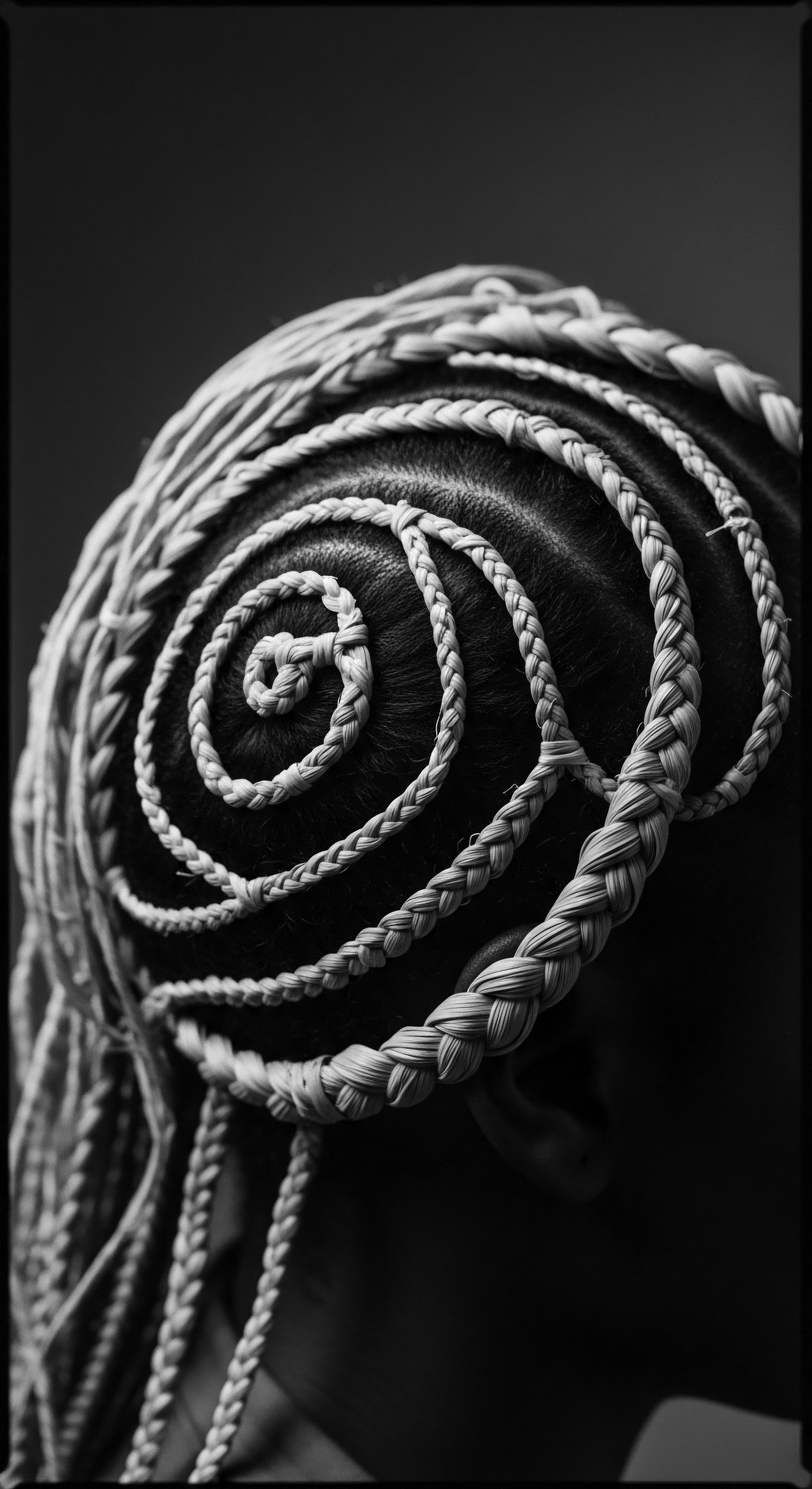
Ritual
The act of styling textured hair is rarely a mere functional exercise; it is, more often, a living ritual, a dialogue between the hands and the strands, steeped in generations of communal knowledge. It is within these traditions of artistry and care that the echo of CROWN Act provisions becomes most resonant. These provisions do not simply protect a look; they safeguard the very practices, the techniques, and the tools that have allowed ancestral styles to persevere, to grow, and to transform across time.

Ancestral Roots of Protective Styles
Many styles recognized by the CROWN Act are, in their very essence, protective. This aspect of care, shielding the delicate strands from environmental harm and manipulation, has been a cornerstone of hair wisdom for centuries. Think of the elaborate Cornrows seen in ancient Egyptian reliefs or the majestic Locs worn by various spiritual traditions across Africa and the diaspora.
These were not just aesthetic choices; they were intelligent responses to the needs of textured hair, minimizing breakage, retaining moisture, and promoting growth. The wisdom passed down through grandmothers, aunts, and community elders often centered on these very principles ❉ protect the hair, and it will flourish.
The CROWN Act’s explicit mention of styles like locs, braids, and twists directly acknowledges their ancestral significance. These are not passing fads; they are cultural mainstays, practices that predate contemporary fashion cycles by centuries. When an individual chooses to wear locs, they are participating in a tradition that spans continents and generations, a tradition that often carries spiritual weight and cultural pride. This legislative recognition validates the importance of these inherited styling rituals, ensuring that they are seen not as deviations from a norm, but as legitimate, respected expressions of one’s heritage.
- Locs ❉ A spiritual and cultural practice with roots in various ancient African and Indian traditions, now a prominent expression of Black identity and heritage globally.
- Cornrows ❉ An ancient form of hair braiding, often intricate and close to the scalp, originating in Africa, serving both practical and symbolic roles.
- Braids ❉ A universal hair styling method, but in Black heritage, often involves complex patterns, communal rituals, and historical significance.
- Twists ❉ A two-strand coiling method, common in West African traditions, offering a protective and versatile style for textured hair.
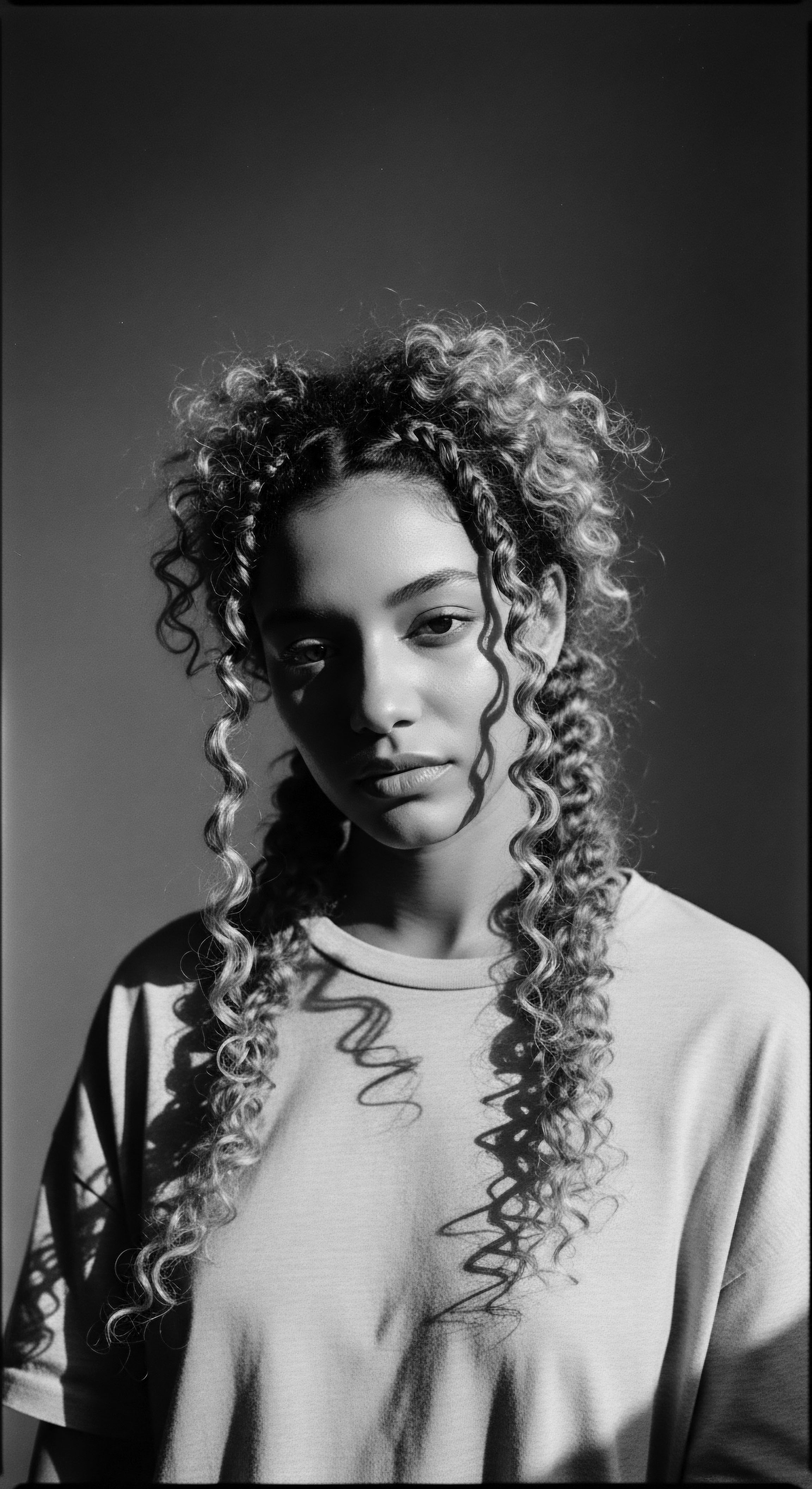
Connecting Modern Tools to Ancient Methods
While the tools of hair styling have evolved, the principles often remain surprisingly consistent with ancestral practices. Historically, combs carved from wood or bone, natural fibers for extensions, and plant-based oils were staples. Today, we use plastic combs, synthetic extensions, and commercially produced products. Yet, the underlying techniques of sectioning, detangling, twisting, and braiding echo those used by our ancestors.
The CROWN Act helps bridge this gap by affirming the right to wear the style itself, irrespective of whether it was created with ancient or modern implements. It means that whether one’s braids were done with the simplest of tools or with salon equipment, the recognition of its heritage and the protection from discrimination remains.
| Ancestral Practice Communal Hair Braiding Rituals |
| Contemporary Relevance (CROWN Act Context) Personal agency to wear braids without professional or educational bias; fostering community spaces for styling. |
| Ancestral Practice Use of Plant Oils for Scalp Health |
| Contemporary Relevance (CROWN Act Context) Freedom to maintain natural hair hydration and health, which often influences the appearance of protected styles. |
| Ancestral Practice Hair as a Map of Identity/Status |
| Contemporary Relevance (CROWN Act Context) Legal protection for visible cultural markers, allowing individuals to affirm identity without fear of career limitation. |
| Ancestral Practice Protective Styles for Longevity |
| Contemporary Relevance (CROWN Act Context) Recognition of practical benefits of styles like locs and twists, reducing pressure for daily manipulation and heat. |
| Ancestral Practice The CROWN Act reinforces the enduring validity and importance of historical hair practices in modern society. |
The very act of styling, particularly within Black communities, often carries a weight of cultural memory. The CROWN Act, by shielding these expressions, respects the communal and individual artistry inherent in textured hair care. It offers individuals the liberty to sculpt their hair in ways that honor their lineage, allowing for a continuous conversation between past techniques and present-day expressions. This legislative stance helps to dismantle the invisible barriers that once discouraged or penalized expressions of inherited hair culture, inviting a fuller, freer participation in styling rituals that honor one’s heritage.

Relay
Our hair, in its natural state and through the styles we choose, is a continuous relay of ancestral wisdom, a living archive of care and resilience passed from one generation to the next. The CROWN Act provisions, in their contemporary phrasing, play a crucial role in safeguarding this relay, ensuring that the legacy of textured hair care and styling remains vibrant and protected within educational and professional settings. It speaks to a deeper understanding of how wellness is intertwined with cultural liberty.

Holistic Care from a Heritage Perspective
The philosophy of textured hair care, particularly within Black communities, has always leaned towards a holistic approach. It’s a sensibility that understands hair as an extension of one’s overall wellbeing, deeply connected to diet, mental state, and environment. Ancestral wellness philosophies often emphasized natural ingredients sourced from the land ❉ Shea Butter for moisture, Baobab Oil for strength, and various herbs for scalp health. These were not just topical applications; they were integrated into rituals of self-care and community bonding.
The CROWN Act, by protecting natural hair and styles, implicitly supports the freedom to pursue hair care regimens aligned with these ancestral traditions. If individuals can wear their hair in its natural, unmanipulated state, or in protective styles that allow for minimal interference and natural ingredient application, they are less likely to resort to harsh chemical treatments or excessive heat that might compromise hair integrity. This legal shield offers the space for practices that prioritize the health and authenticity of the strand, echoing ancient wisdom that valued longevity and vitality over temporary alterations.
Ancestral care practices, deeply rooted in community knowledge and natural ingredients, serve as a testament to the enduring wisdom that the CROWN Act seeks to protect.
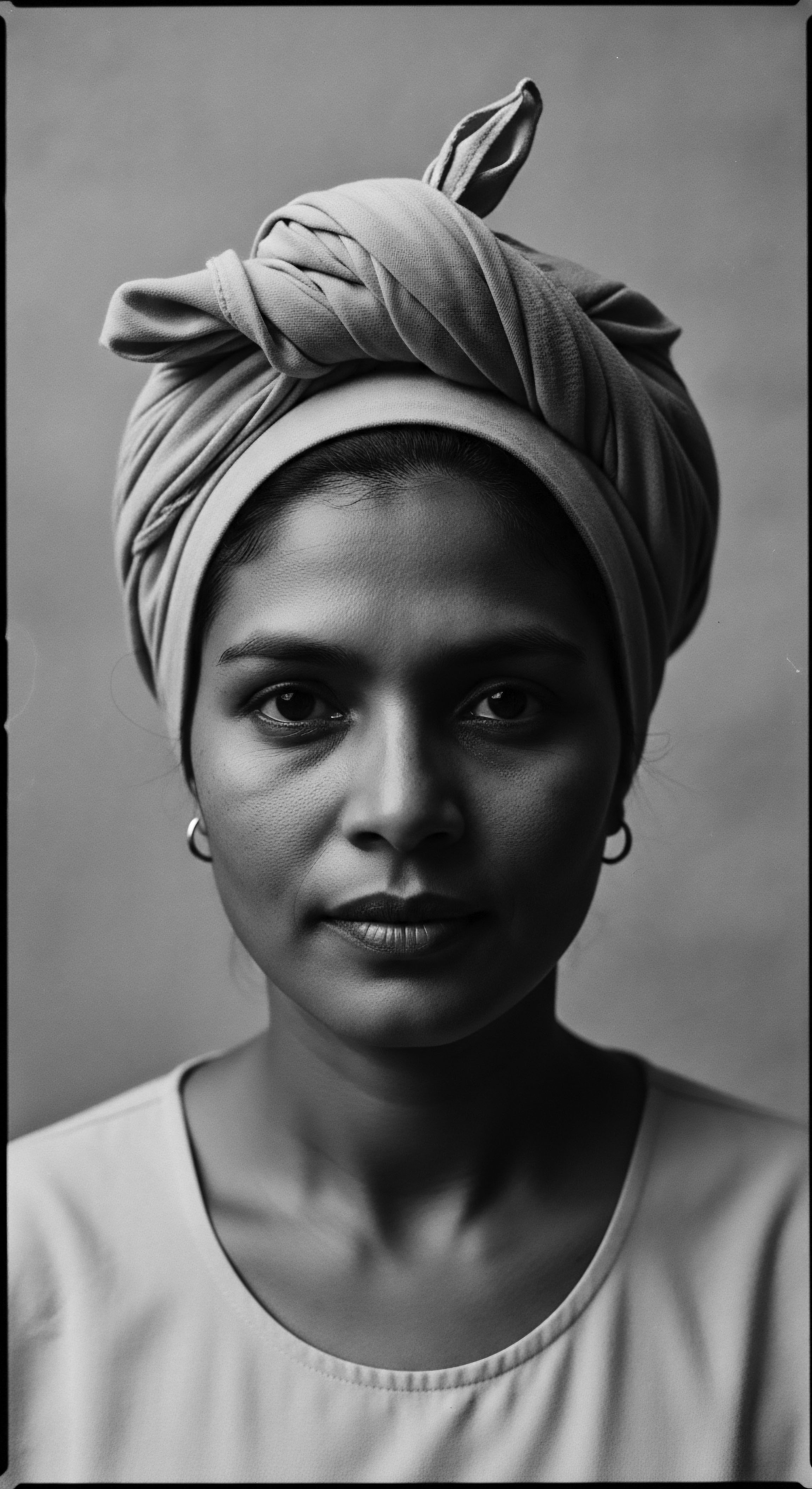
Nighttime Traditions for Hair’s Health?
Consider the nightly ritual of wrapping hair or covering it with a bonnet or silk scarf. This practice, common in many Black households, is more than a trivial habit; it’s a direct continuation of ancestral knowledge about preserving hair’s moisture, protecting delicate strands from friction, and maintaining styles. In many historical African contexts, hair was often carefully wrapped for protection during sleep or for ceremonial purposes. These practices speak to a long-held understanding of hair vulnerability and the importance of gentle preservation.
The CROWN Act, while not explicitly legislating bonnets, creates a societal atmosphere where such care routines are implicitly respected. When an individual’s natural hair, secured by a bonnet overnight, is accepted and celebrated during the day, it validates the entire spectrum of care that textured hair requires, from morning styling to evening protection. This quiet, personal act of preservation, inherited through generations, contributes to the overall health and longevity of hair, making ancestral styles more sustainable.
The challenges faced by textured hair – dryness, breakage, and scalp sensitivities – have been addressed through innovative care solutions throughout history. From traditional remedies using fermented rice water in parts of Asia, to elaborate oiling rituals in various African societies, the problem-solving compendium for hair has always been extensive. The CROWN Act’s broad sweep, which encompasses a wide array of styles, helps to normalize the varied approaches to hair health that are often integral to maintaining these ancestral expressions. It allows for the public presentation of styles that may be the result of a very particular, heritage-informed care regimen, freeing individuals from feeling compelled to conceal or alter their hair in ways that contradict its natural needs or traditional upkeep methods.

How do CROWN Act Provisions Address the Legacy of Hair Discrimination?
The CROWN Act’s provisions directly confront a deeply ingrained legacy of hair discrimination, particularly for Black and mixed-race individuals. For centuries, across the diaspora, hair served as a potent symbol of identity, status, and resistance. However, it also became a primary target for colonial and oppressive systems seeking to strip individuals of their cultural markers. Laws and social norms in many Western societies often deemed natural Black hair as unruly, unkempt, or unprofessional, forcing conformity to European beauty standards.
This had tangible consequences ❉ students expelled from school, employees denied jobs or promotions, and individuals facing social ostracization. One particularly poignant historical instance, cited by scholar Ayana Byrd in her extensive work on Black hair culture (Byrd & Tharps, 2014), details numerous examples from the early 20th century to the present, where Black women were denied opportunities simply for wearing styles like braids or Afros in professional settings. This systemic disadvantage, which penalized the very display of inherited hair texture and styling practices, created a pervasive sense of insecurity and self-alteration within the community.
The CROWN Act serves as a legal shield against this historical burden. By prohibiting discrimination based on hair texture and protective styles, it creates a legal precedent that affirms the right to self-expression through one’s hair, without fear of reprisal. This is not a superficial legal adjustment; it is a fundamental recognition that hair, for many, is inextricably linked to their racial and cultural identity.
The Act ensures that individuals can wear their hair in culturally significant styles – styles that echo ancestral practices of beauty, spirituality, and community – without facing discriminatory barriers in the workplace, educational institutions, or other public accommodations. It directly challenges the notion that one’s hair must conform to a dominant cultural aesthetic to be considered acceptable, thereby reinforcing the legitimacy and beauty of Black and mixed-race hair heritage in its authentic forms.

Reflection
To contemplate the CROWN Act is to witness a contemporary legal framework gently, yet firmly, embracing an ancient truth ❉ that hair, particularly textured hair, is a profound repository of heritage. It is a truth whispered across generations, carried in the very shape of each strand, in the mindful rhythm of a comb, and in the communal spirit of styling gatherings. The journey of our hair, from the elemental biology of its formation—the ‘Echoes from the Source’—through the living traditions of its ‘Tender Thread’ of care and community, to its assertive role in voicing identity and shaping futures as an ‘Unbound Helix,’ all finds resonance within these provisions.
The Act serves as a vital affirmation, a societal acknowledgement that the curls, coils, and locs that crown our heads are not just personal choices; they are expressions of a collective memory, a continuous story. They speak of resilience honed through hardship, of creativity that persisted despite suppression, and of a beauty that transcends narrow definitions. Roothea’s ‘Soul of a Strand’ ethos finds its legal echo here, in the recognition that our hair is a living, breathing archive. It allows us to carry our past visibly, proudly, into our present and future, ensuring that the wisdom of our ancestors continues its vibrant, unbroken relay.
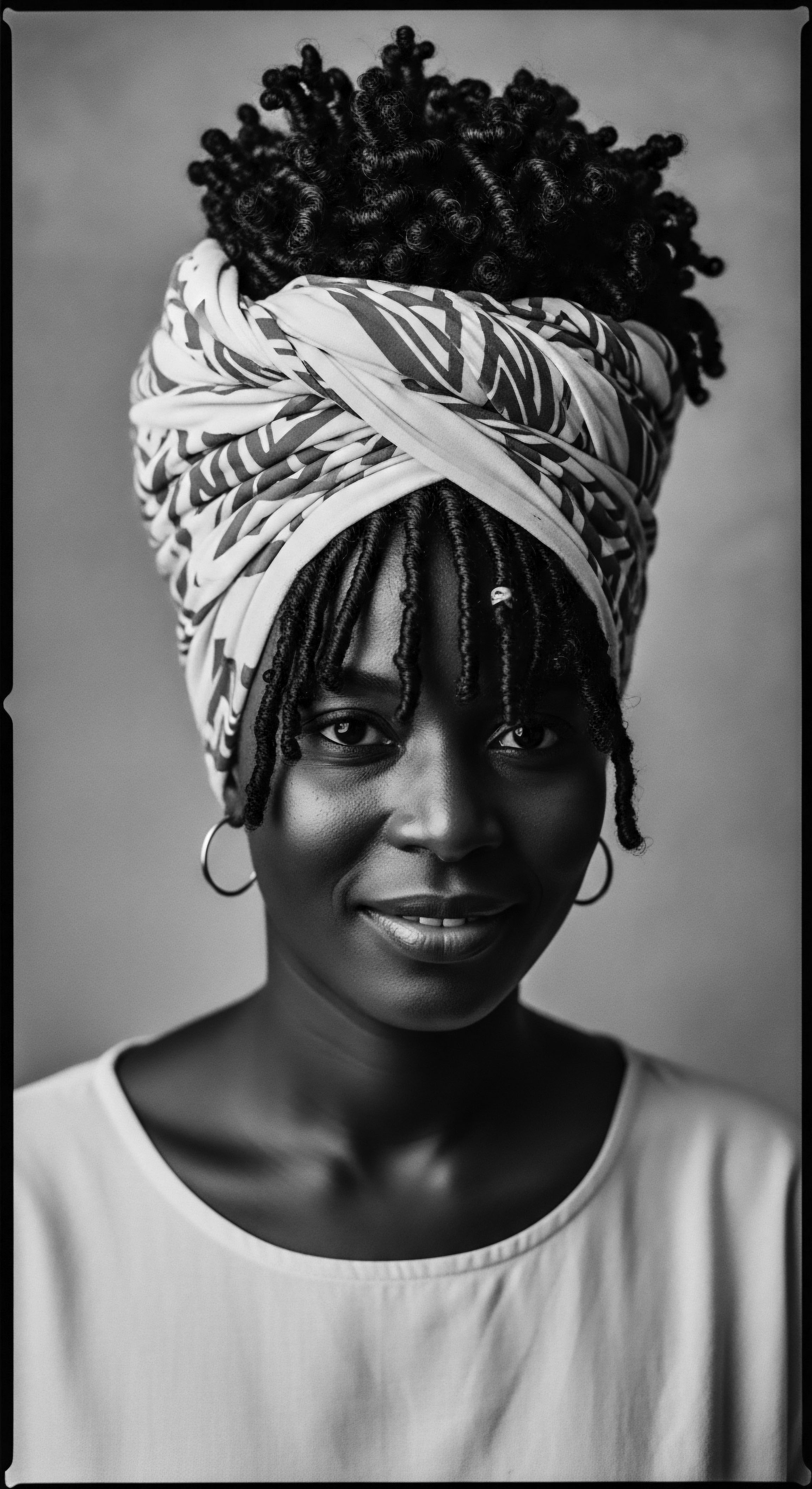
References
- Byrd, A. & Tharps, L. (2014). Hair Story ❉ Untangling the Roots of Black Hair in America. St. Martin’s Griffin.
- Thompson, R. F. (1993). Face of the Gods ❉ Art and Altars of Africa and the African Americas. The Museum for African Art.
- Neal, A. (2019). Coils, Curls, and Congress ❉ The Legal Battle for Black Hair Freedom. University Press of Mississippi.
- Hooks, b. (1992). Black Looks ❉ Race and Representation. South End Press.
- Davis, A. Y. (1981). Women, Race, & Class. Random House.
